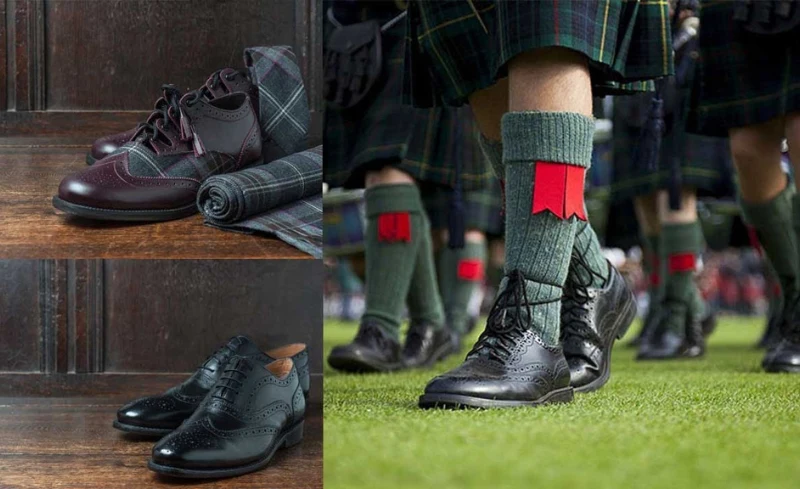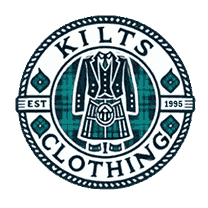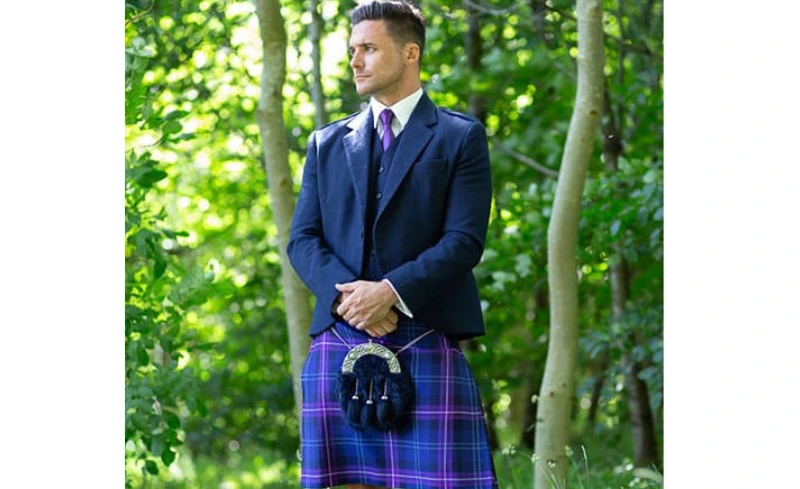Kilt Shoes: The Complete Brogues Guide

Traditional Scottish footwear, the kilt, is an essential part of the outfit because of the authenticity and style it provides. When worn with a kilt, these shoes complete the image and are true to the period. This book explores the fascinating background and distinctive style of kilt shoes, tracing their development from the 1600s to the present.
We will also go over why kilt shoes are so great, why they are becoming more popular at weddings, and how to pick the perfect pair for any event. You'll also discover maintenance advice and ideas for getting the most out of your kilt shoes.
History of Kilt Shoes
The original kilt shoes were made in Scotland in the 16th century for practical reasons, and they have a long and storied history. The rocky Scottish landscape inspired these shoes, which are both comfortable and long-lasting. The Ghillie brogue, the most conventional shoe style for men wearing kilts, gradually became the norm. Aesthetically and functionally, ghillie brogues were defined by their peculiar lacing system that circled the ankle.
Kilt shoes also developed alongside Scottish fashion. They evolved from a merely functional item to a fashionable accent that elevates the kilt. Modern kilt shoes come in various styles, combining traditional components with current fashion trends. These shoes are perfect for formal and casual parties alike. Kilt shoes have always played an important role in Scottish culture, and their capacity to adapt to new design trends is seen in their evolution.
Appearance of Kilt Shoes
Traditional Scottish clothing is only complete with kilt shoes, guaranteeing that the wearer is true to their heritage. Because of their adaptability, kilt shoes can be worn in formal and informal settings. Options are available in a variety of styles for each need. If you plan on wearing your kilt for a long time, it's important to choose a good pair of shoes. Shoes that fit properly offer arch support and cushioning, making them perfect for long events.
how to tie your Kilt Shoes:
To tie Ghillie Brogues or Kilt Shoes, start by crossing the laces at the bottom and then wrap them around the ankle several times. Next, crisscross the laces up the shoe, ensuring a snug fit. Finally, tie a secure knot at the top or tuck the laces neatly into the shoe for a polished look. Adjust for comfort, ensuring the shoes feel secure yet comfortable for all-day wear, making sure the look complements your kilt attire perfectly
Modern Weddings with Kilt Shoes
Guests at weddings with a Scottish motif often opt to wear kilts. Kilts elevate the bridal dress and give it a more classic feel. Kilt hoses in contrasting colors are the perfect accessory for wedding kilt shoes. Match the shoes to the event's level of formality and ensure they go with the rest of your kilt accessories, such as the sporran and pins.
Advantages of Kilt Shoes
If you're going somewhere that requires you to seem your most refined, you must wear formal kilt shoes. These shoes are the way to go when an air of sophisticated elegance is required, such as at a wedding, formal dinner, or traditional ceremony. Formal kilt shoes are the perfect choice for these events with their refined style and premium materials.
Accessorizing a formal kilt with the right sporrans, kilt pins, and kilt hose complements the shoe and ensures that the whole ensemble is in keeping with cultural norms and dress requirements. Traditional kilt shoes are essential to conventional Scottish dress since they maintain tradition and create a unified and fashionable look.
Picking Out the Perfect Kilt Shoes
It is crucial to choose your kilt shoes according to the event. Dressy occasions call for Ghillie brogues, while more relaxed affairs call for kilt shoes. Think about the material as well; kilt shoes made of leather are classic and long-lasting, perfect for formal events, but kilt shoes made of suede are more laid-back and casual but need more care. To avoid pain, it is vital to ensure a suitable fit. When you shop online, be sure to check the sizing charts and try on a variety of sizes. If you plan on wearing your kilt shoes for a long time, be sure they fit properly.
Harmonious Wear: Kilt Shoes and Kilts
Attention to detail is required when pairing kilt shoes with kilts; more is needed to choose the proper shoes. Kilt hose, or knee-length socks, are traditionally worn with kilt shoes to complete the look. Use neutral or matching hues if you want your outfit to flow together. Ensure that your kilt shoes are the focal point of your ensemble by accessorizing with sporrans, kilt pins, and flashes (garter ties). A polished and put-together appearance, expressing both personal style and tradition, is the product of meticulous selection and coordination.
How to Keep Kilt Shoes in Top Condition
Keep your leather kilt shoes clean by wiping off the uppers with a moist towel and regularly applying a leather cleaner for embedded grime and spills. Maintaining soft, supple leather requires frequent applications of leather conditioner. Use a suede brush to keep the texture and remove dirt off suede shoes. Keep suede dry; let the shoe air dry if it gets wet, and then brush to bring back the texture.
Conclusion
Kilt shoes are essential to traditional Scottish dress since they are practical and fashionable. Staying on top of your game requires knowing the many types, choosing the perfect pair, and maintaining the proper pair. Follow these steps if you want your kilt shoes to last and complement your attire. Whether you're shopping for formal or casual styles, the secret to looking fashionable and traditional in kilt shoes is the right selection and regular upkeep.
FAQs
Traditional footwear worn with a kilt includes Ghillie Brogues, formal leather shoes often adorned with laces that wrap around the ankle, enhancing the traditional Scottish attire’s elegance and charm.
Yes, dress shoes are commonly worn with a kilt, especially formal events or occasions where a more polished look is desired, offering versatility and elegance to complement the traditional attire.
They are called Ghillie Brogues due to their traditional Scottish design, originally worn by Scottish Highlanders and named after the ghillies (gamekeepers) who wore similar footwear.
Traditionally, Ghillie Brogues are worn with a kilt. These are characterized by their unique design with long laces that wrap around the ankle, complementing the formal and traditional attire of Scottish kilts.
Brogues can vary in formality depending on their style. Traditional full brogues with extensive perforations tend to be less formal and are often considered appropriate for casual or smart-casual settings. On the other hand, semi-brogues and quarter brogues with fewer perforations are more formal and suitable for dressier occasions.
Yes, brogues are considered fashionable and versatile footwear choices. They blend classic style with modern trends, making them popular for both casual and formal settings. The variety of designs available, from traditional full brogues to sleek semi-brogues, allows for flexibility in styling, enhancing their appeal in contemporary fashion.
A Ghillie shoe, also known as a Ghillie brogue, is a traditional Scottish shoe worn with kilts. It features a distinctive design with long laces that wrap around the ankle, providing a unique aesthetic that complements the formal attire of Scottish kilts. These shoes are named after ghillies, the Scottish gamekeepers who originally wore similar footwear.




